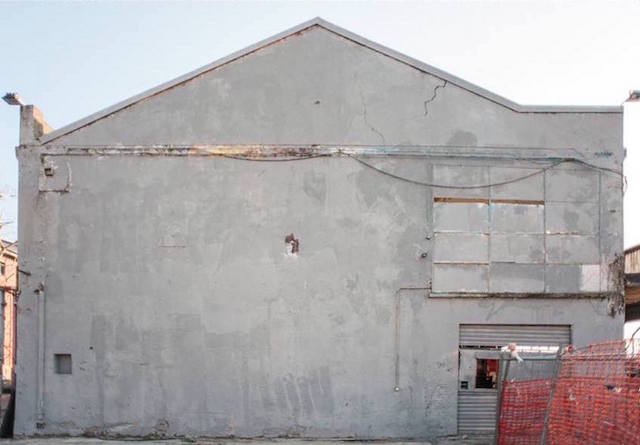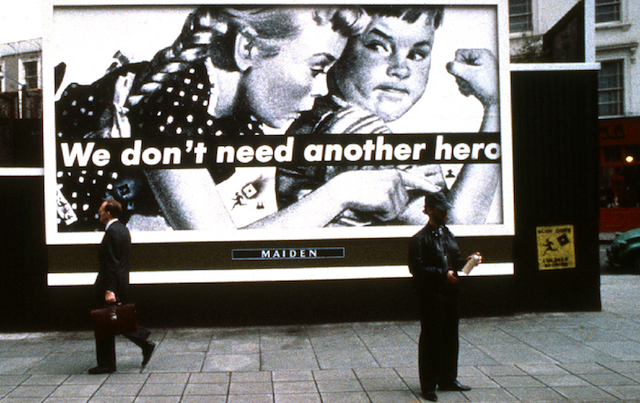
Last week, we covered Blu‘s protest in Bologna, where he and a team of helpers buffed out all of his murals in the city (and some now face legal issues as a result). They were protesting an exhibition, Street Art – Banksy & Co., which includes murals by Blu that were removed off the streets of Bologna and are being exhibited against his wishes. I called on people to boycott the exhibition. However, the response from the street art community has been more mixed, with many supporting Blu, and others suggesting that Blu has acted like a petulant child. The exhibition opens today, so we’ll soon see how the public responds, and (as the show’s lead curator Christian Omodeo insists we hold our breath for) what the controversial mural remnants look like in the museum.
In the meantime, John Fekner, whose work is included in Banksy & Co. (as is the work of his long-time collaborator Don Leicht), reached out and shared his reactions with Vandalog. Fekner is a key historical figure in street art, a pioneer as a stencil artist with an unimpeachable record as a political artist and an artist’s artist.

From Fekner:
- Whether you stole a pencil from your schoolmate, or a lover from your best friend, or a stapler from work, the cold-hearted facts remain: everyone steals. We exist in a confusing and twisted reality of unscrupulous financial gain and artistic theft.
- If you create rock, punk, rap or any other type of music, there’s no way of stopping some Muzak elevator-friendly dispirited interpretation of your original rebellious music.
- If you originally aspired to be an underground artist; then just stay underground. Similarly, if you’re a musician, don’t get pissed off if a fan asks you to sign a copy of your cutout vinyl album that they bought for a buck or less.
- In the 80s, low brow thieves literally ripped Keith Haring’s chalk drawings from subway advertising spaces and entrepreneurial high brow scoundrels ripped off New York City urban kids’ graffiti sketches for pennies.
- The bottom line is: what’s done in public-doesn’t remain in public. There’s no protection for artists who trespass. It’s the chance one take outdoors.
- If you create illegal art murals, street rules are always in effect:
1) You can’t stop a drunk in the middle of the night from pissing on your wall.
2) You can’t stop a bulldozer from razing your work.
3) You can’t stop a neighborhood anti-graffiti squad from painting over your work.
4) You can’t stop a well-dressed thief in a suit, or their hired slug with a chisel, from removing your wall work and hauling it off to their lair, garage, museum or art market.- Under any circumstances, don’t immediately and irrationally react. If your original aspirations were to be an artist- then just do what you were meant to do: be an artist. Don’t double shift and be a night watchman patrolling the streets to try and thwart thieves of your work. Unique temporary outdoor creations engendered a public conversation that includes everyone: art lovers and art haters, lowbrow and highbrow, and everyone who interacts with your public work.
- If you analyze and then destroy your creations; that’s an overreaction. Courageous? Yes. But it goes beyond your original spirit, freedom and joy of creating your work. It might potentially backfire and flame unquenchable desires for something else: more acceptance, more branding, more visibility, more publicity, more interviews, more legendary status, etc. It’s tricky.
- The rip-off and resale of an artist’s artwork continues long after the artist is gone. If the artist doesn’t erase it in his/her lifetime, there’s a good chance that the corrupt art world of bankers, developers, board of directors, scholars, academicians, curators or art history itself, will erase you.
Photos courtesy of Blu and John Fekner/Artangel
